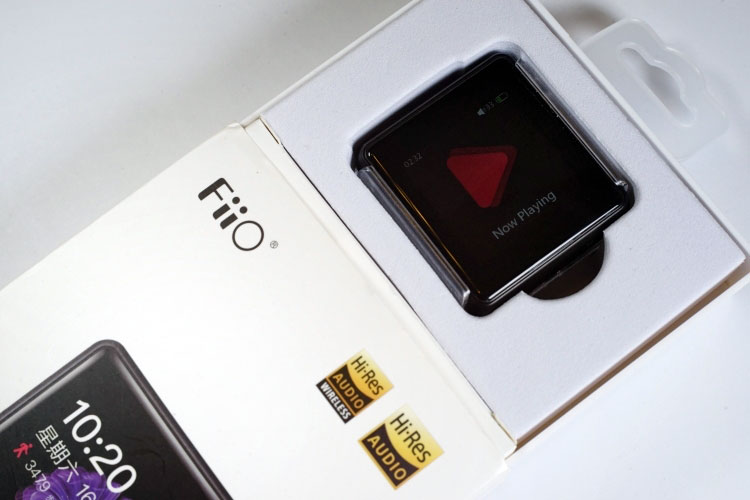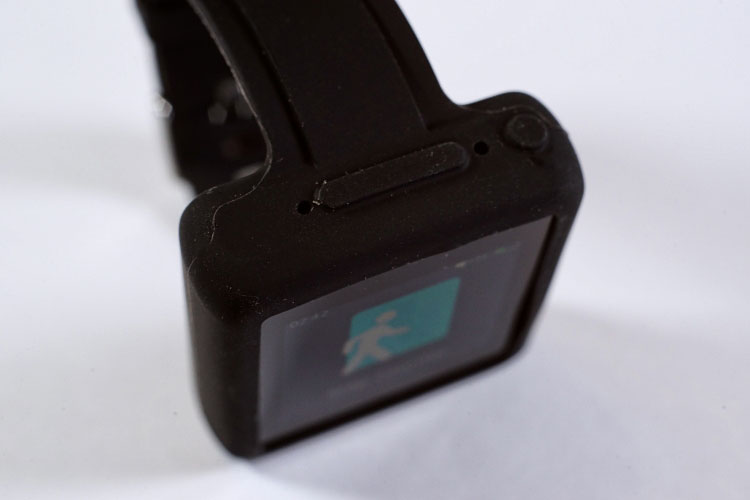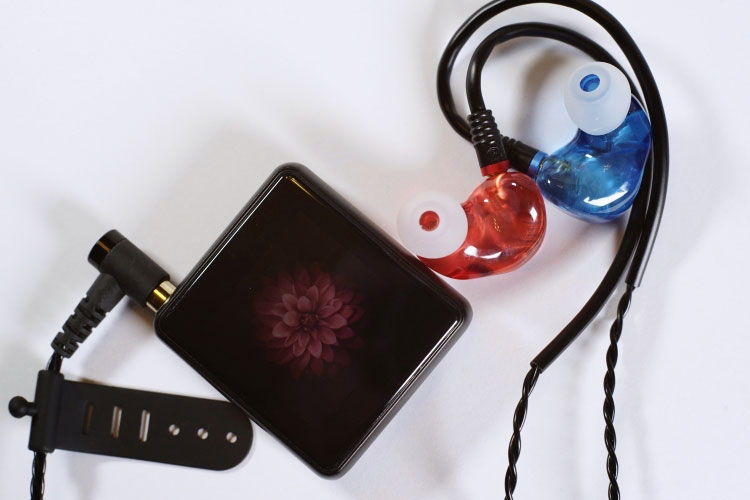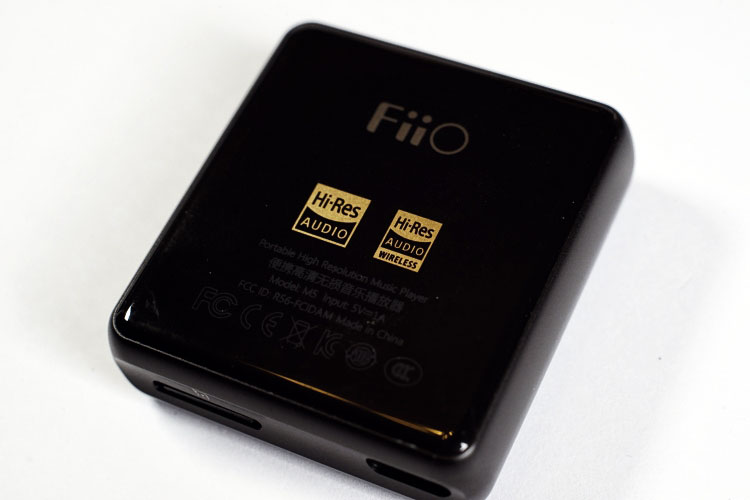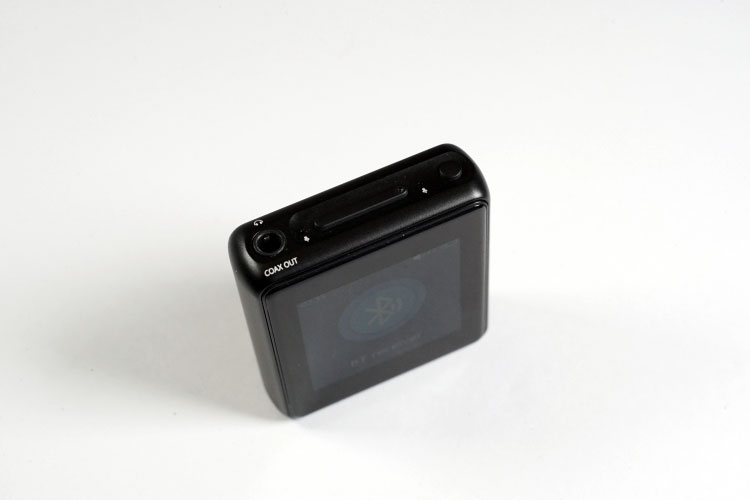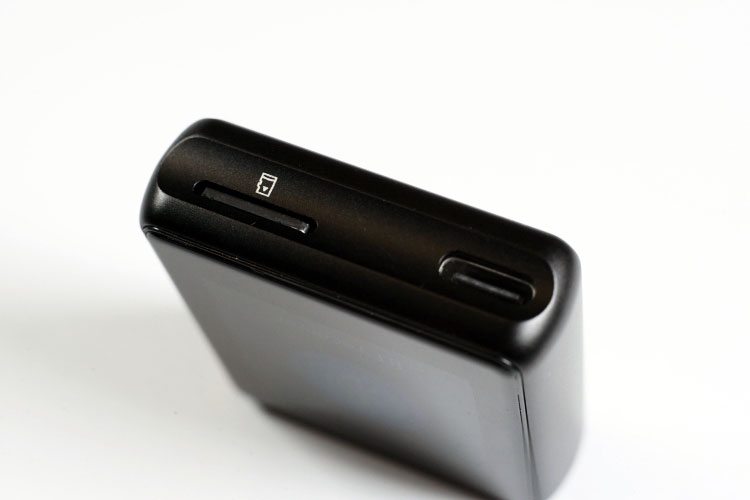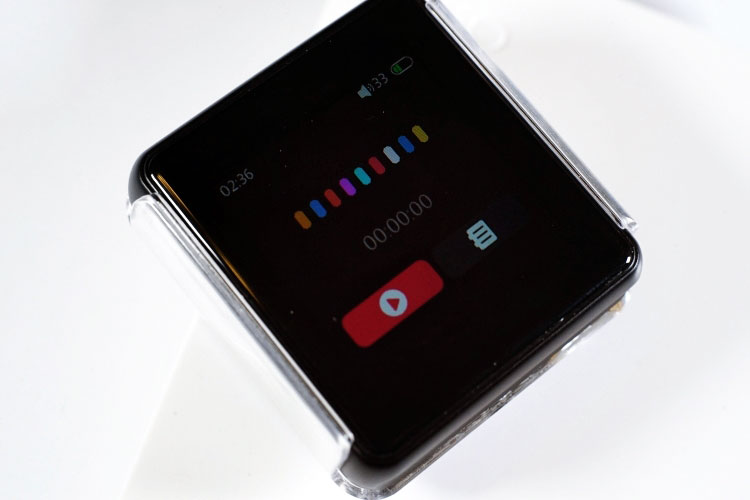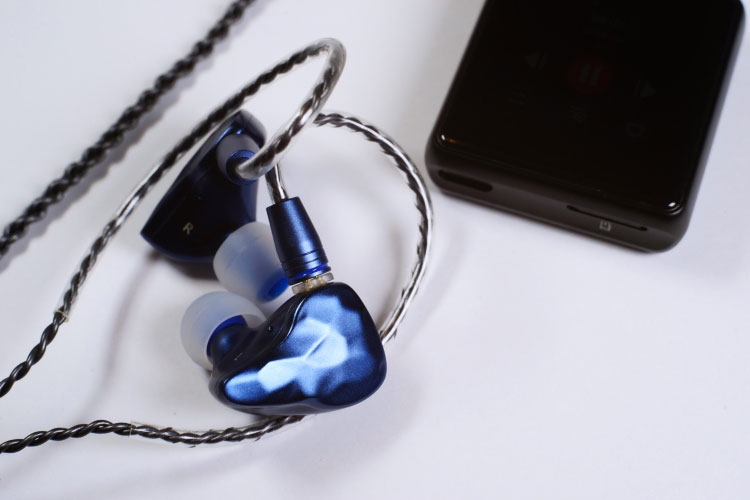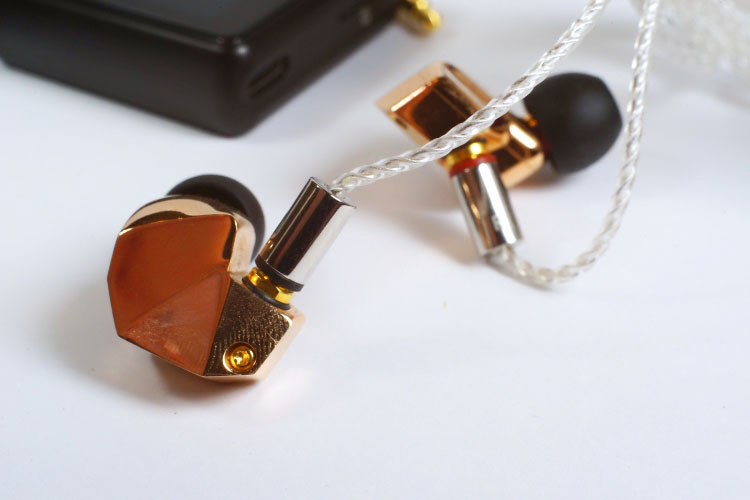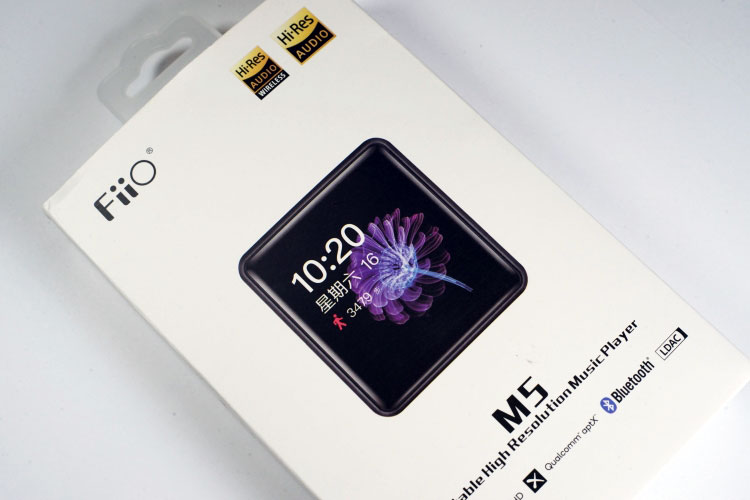The FiiO M5 is the company’s latest miniature touchscreen digital media player designed to fit into both the lifestyle and audiophile category. It retails for $99.99
Disclaimer: The FiiO FH7 sent to us is a sample in exchange for our honest opinion. We thank FiiO for this opportunity.
To learn more about FiiO reviews on Headfonics you can click here.
It is not the first time we see a small cubic Digital Audio Player, but FiiO truly surprised us by differentiating its latest model M5 from all competitors. Featuring not only Hi-res Bluetooth receiver function and high-quality microphones for recording the M5 also includes pedometer for sports as well as working as a watch!
Preinstalled with a clip case with an extra silicone band option, the Japan HP FES AWARD holder M5 is a fully functional and wearable DAP. The small design also does not compromise what FiiO have chosen internally either with some excellent hardware behind some good DAP functions and a level of performance above its price point.
Packaging & Accessories
The M5 comes in FiiO’s budget series signature and fairly simple white packaging. Inside you will find a USB-C to USB-A cable for data transmission and two screen protectors for the front screen. There is a removable clip preinstalled that acts as a protective case. After removing it you can find a protector film preinstalled on the rear side of the player also.
Silicone Watchband
The silicone watch band is sold separately under the model name SK-M5. It is soft and light with a nice molding quality. You can hardly spot the molding line on the finish of the watchband.
The material is soft but it actually works just fine and doesn’t slide when you get sweaty. According to FiiO, the SK-M5 is now discontinued and a new model under the code SK-M5A will be replacing the SK-M5 so expect an even better version to be available soon.
Design
The M5 has a very tiny form factor and is much smaller than the size of M6. Honestly, it looks just slightly bigger than common smartwatches. From FiiO’s official data, the M5 weighs just 38g which is very compact and feels light in the hand.
There are 5 colors you can choose from and we received a black version for this review. The M5 has a concaved top panel and at the deepest point sits the socket and buttons. This should prevent you from accidentally activating something on the go.
The front and the back panel are both fitted with 2.5D glass on CNC machined aluminum housing. It is a very clean-looking design with a quality finish to match.
Button layout / Control
You will find a volume bar and the power button on the top but otherwise, the M5 is very much a touch screen navigation DAP.
The buttons layout is carefully planned to save space but you will notice that any sort of dedicated ”play” button is missing. I only found out the power button doubles as the play button when I started playing songs.
You can also play/pause the current song by clicking on the power button once you connect to your phone via BT. You can answer calls by clicking it once as well. By double hitting the same button you can turn on and off the screen.
Screen
Onboard under the beautiful but very small 2.5D glass is a 240*240 IPS touch panel measuring 1.54″. The screen can get very bright soit is actually not that difficult to see everything clearly under sunlight.
The touch navigation is fairly sensitive and it does feel very smooth and responsive when attempting to navigate on the M5. The only downside is that the screen doesn’t detect surrounding brightness so it cannot auto-adjust.
Memory
The FiiO M5 is no onboard memory. Instead, you have a single microSD slot which officially supports up to 2TB. You will need a card for recording and also for firmware updates. There are no OTA updates, instead, you download the latest firmware from the official site and put the zipped file in the root folder of the memory card. To update, you will need to go inside the settings and manually select the firmware update.
Rather interestingly, you can hook up the M5 to your phone as an OTG flash drive device to access the memory card inside it and copy and paste songs from one device to another. Neat!
Battery
According to official specs, the M5 has 10.5 hours playback time and 13.5 hours as a Bluetooth receiver. Idle mode lasts 22 days on its 550mAh battery. That reasonable for the size of the battery which is rather small but it will vary according to your usage patterns. Leaving the screen on and BT will drain it fairly quickly. Turning the screen off, low ohm monitor usage and MP3’s will get you closer to 10 hours playback.
Hardware
The M5 uses a Qualcomm CSR8675 and AK4377 decoding chipset. Do not let the small size fool you, the M5 will support up to Native DSD128 replay and covers all hi-res audio standards including LDAC for wireless transmission. Much like the larger M6, there is only a single 3.5mm output that fits most listeners so no balanced output here.
DAC & USB host
Surprisingly this small DAP can also work as a USB-DAC or connect as the host for other USB DAC, enabled by its Ingenic Semiconductor’s X1000E solution.
On a Mac OS, it works right out of the box without any drivers but Windows drivers are needed unless you use a Creator’s Edition or above with Universal 2.0 drivers. The M5 drivers can be downloaded on FiiO’s official site. You can also make use of its lineout function to hook up via a 3.5mm AUX input of another amplifier.
The M5 can also host other USB audio devices so you could connect to other DAC amps, for example, the Chord Mojo. DoP/D2P options are selectable in the settings and you can also link up to other decoders using its Spdif output.
Bluetooth
Receiver
The M5 will allow you to answer phone calls over a Bluetooth connection. While you are using Bluetooth mode you cannot access the local library on the M5 and can only hear the media on the host machine. When you connect to your phone via Bluetooth you can answer phone calls by pressing the play button on the M5.
The M5 supports a wide range of codecs including SBC/AAC/aptX/aptX-HD and the latest LDAC codec. For LDAC Hi-res connections, I am using the M11 as host and connecting to the M5. The connection is swift and there is no interference heard. The signal is also strong and it connects quite well even when I put the M11 in my bag and M5 clipped on my pocket in front. You will see ”LDAC” showing up on the top bar on the M11 when it is transferring at LDAC rates.
Transmitter
You can turn on the Bluetooth transmitter function in the settings menu. The navigation is similar to a phone system and you could search other Bluetooth devices and listen from Bluetooth headsets or other receivers. When used as a transmitter the M5 supports SBC up to LDAC so Android Oreo pairings will benefit.
Software Navigation
It takes around 10 seconds for the M5 to boot up and it is very smooth and snappy to navigate and enter different modes. The battery time is very sufficient for a few days of use.
My concern would be the volume buttons being a bit hard to reach but at the same time, you will not accidentally press on them. When turning off the screen during audio playback you will have to double press or else you will be pausing the song. This is a quirky feature that also takes me some time to get used to.
To fast forward/ go to the next song you will need to turn on the screen and unlock from the watch screen to enter the currently replaying song page. This is a bit clumsy and I hope there is a future update with an option to choose not to display the watch screen and let the screen wake up to the playback screen directly.
Features
Watch Display (5 styles)
With the latest firmware, you get movement-based interaction with the M5. For example, when you swing your arm upwards the screen will automatically turn on and shows the time. There is enough brightness for you to read the time under the sun.
You can change the watch display in the setting menu and there are 5 different designs you could choose from. Design No.2 looks the best to me, as it resembles Apple’s style. You can also orientate the screen in any direction in the settings which might help with left or right arm strap usage.
Step Counter And Record
The M5 step counter application can be accessed from the main menu and there are two buttons to start collecting step counts and to reset it to zero. You can start counting and go back to the main menu and use other functions while it operates in the background. You will see a small walking icon on the top bar when it is activated.
When you set zero the count there will be data stored on the other page with the date you record the data so if you are doing different sports sessions you could keep the records separately.
Recording
Dual microphones are integrated at top of the M5 on each side of the volume button array. This looks quite professional not to squeeze both channels inside the same hole or do a mono-stereo conversion and the recording quality is quite decent.
You can choose the recording quality in the setting menu and the recorded file is in Wav format. There are two holes also on the silicone watchbands so it will not block the microphone when you are putting it on the strap.
Sound Impressions
Although M5 has so many functions the hardware does not seem to be compromised. The M5 uses a non-integrated, highly power-efficient chipset with a separate AKM 4377 chipset that enables up to DSD128 hardware decoding and a stunning >118dB S/N ratio. The solution covers a higher resolution codec including DSD64/128 and AIFF also ISO files with CUE support.
On paper, the S/N ratio is very good for a device at this price, and remarkably the noise control on the M5 is done well listening with sensitive IEMs. Output impedance is<0.5Ω and power output at 16ohm load is ≥42mW, quite low compared to the bigger brother M6.
With the lower output power, I would recommend pairing with more sensitive IEMs, especially ones that aren’t focusing on the treble. I tested the M5 with a handful of IEMs and turns out I prefer hybrids in most cases that compensate the bass and at the same time outputs brighter treble. Entry-level dynamic IEMs with a balanced tuning will also work well, you will hear clean vocals and with some elevation in the tuning, the upper mids sound very clear without fatigue.
Synergy
Paired with ikko OH1
I assume OH1 will sound veiled on M5 being underpowered but its lifted bass actually compensates for what the M5 lacks. The combo sounds full in bass and the vocal is positioned more upfront with good energy. There is some good synergy between this pairing surprisingly and you may expect similarly tuned hybrid IEMs, for example, Oriveti OH300 to work their magic on M5.
The overall sound performance with this combo is enjoyable and engaging with a focus on the mid-lows, works great for game music/ dance music.
Paired with Final B3
The B3 is one of the latest Final audio works in a beautiful rose gold finish. Since the other hybrid ikko OH1 works well with M5 I was curious to try the B3 on it and it did produce pleasing results and more than I expected.
The vocal on the B3 sounds natural and smooth with good weight and decent headroom. The very upper-pitched vocal range is still a bit shy but for powerful voices, it sounds lush and clear. With less bassy tracks / good recordings there is ample resolution and tonal balance. Overall, I quite enjoy the magic this combo sparks.
Paired with FiiO FA1
The FA1 sounds fairly balanced with the M5. The bass punches light and you can hear the upper frequencies rolling off with lighter voices. It is a fast-paced yet cheerful tuning that brings out extra details in the mid-high region.
Nevertheless, the vocal is positioned somewhat far off. Whilst the presentation with this pairing enlarges the staging it may be a little bit hollow for tracks that have loose bass.
Selective Comparisons
FiiO M6
M6 is released not long ago and you may be questioning which one to choose. In fact, they are very different in structure and vary in function. The hardware on the M5 and M6 are completely different. The M5 uses an Ingenics solution, AKM DAC, CSR Bluetooth chipset and the M6 sports Exynos processors, ESS DAC, and a Samsung Bluetooth chipset.
The M6 has a nicer screen, faster OS, onboard 4GB ROM versus no onboard ROM on M5. There is a more precise volume control on the M6 with 120 steps doubling M5’s 60 steps. It looks like the M6 is superior in every dimension, however, the M5 as a USB DAC supports a higher bit-rate with DSD128compared to the M6’s 24/192 in DAC mode only.
The user experience with the M6 as a music player is also superior as you can view the playlist a lot easier. The M5 works better as a multifunctional wearable device and still sounds engaging with the right choice of earphones.
The M6 doubles the battery size and output power also supports streaming via different apps. You can hear the stronger output power of the M6 comparing both players with the same IEMs, especially dynamic IEMs.
Shanling M0
You can easily relate the size of the M5 compared to the Shanling M0, a big hit since its release that has decent power for demanding in-ears or even small cans. Putting the Shanling M0 and the FiiO M5 side by side there are some hints suggesting their different positioning.
The M5 has a more consumer-orientated approach with minimal physical buttons whilst the M0 features an avant-garde design with a cool volume knob. On both models UI, navigation experience and screen responses are similar.
Soundwise the M0 targets more demanding users with its higher output circuitry. You will hear solid, energetic bass impact along with the ability to drive more demanding iems regardless of their size. The newer contender M5 focuses on multifunction, packs in a stereo recorder, step-counter, watch display, and maintains a darker background with lower output power.
In comparison, the Shanling M0 sounds more balanced, has the better separation that works well with mid-tier, higher-end earphones. The M5, on the other hand, boosts some frequencies to bring out details in the treble and mid lows, carefully compensating its lower output to pair well with sensitive gear. The tuning on the M5 helps to breathe some life into flatter tunings, which some may find more engaging than the M0.
The user experience and newer functions put the M5 into my daily carry. Soundwise it doesn’t necessarily replace the M0 and in fact, they complement each other with different signatures and power ratings.
HiBy W5
The HiBy W5 is equipped with Hiby’s UAT technology enabling 192kHz playback and a lot of custom settings. As a dedicated receiver, the W5 has a smaller profile, tuning is cleaner and more powerful (80mW per channel @32ohm compared to M5’s 24mW @32Ω from official data).
The FiiO M5 packs in a lot more useful features and does feel like an entirely different product. The W5 is developed for better output power but you will still find M5’s output comfortable for pairing sensitive IEMs with it.
Our Verdict
At $99.99, the FiiO M5 packs in professional and industrial design, also a very complete DAP experience with advanced Bluetooth capabilities.
The clip case tagging alone makes it a practical high-resolution Bluetooth receiver while you can wear the M5 to the gym with the extra watchband and stream from your phone. Along with the SHanling M0 and the Hidizs AP80, the M5 is perfectly suited for use at the gym or for active lifestyles.
From the start, I didn’t have much expectation on the sound output and to my delight, it pairs quite well with some hybrids and dynamic IEMs. Considering the price it offers a lot of usable scenarios for both casual and audiophile users.
FiiO M5 Specifications
- Processor: Ingenic X1000E @ 1 GHz
- RAM: 64MB
- OS: Linux
- DAC: AK4377
- Bluetooth interface: CSR8675
- Bluetooth version: 4.2
- Supported codecs: SBC, aptX, LDAC — передача, SBC, AAC, aptX, aptX HD, LDAC — receiving
- Screen: 1.54, IPS TFT, 240×240
- Memory expansion: MicroSD up to 2 TB
- Battery: 550 mAh, Li-Po
- Playback time: >10 hours on 3.5 mm output, >12 hours Bluetooth (SBC), >13 hours Bluetooth receiving (SBC)
- Max resolution: 384 kHz/32 bit, DSD128
- Format support: DSD (DSF, DFF, ISO), APE, FLAC, WAV, AIFF, ALAC, WMA, MP3, OGG, AAC
- Output power: ≥42 mWt @ 16Ω, ≥24 mWt @ 32Ω
- Frequency range: 5 Hz ~ 90 kHz (–90 dB)
- Noise level: <2.5μV
- Output impedance: <0.5Ω
- THD + noise: <0.003%
- Channel separation: 74 dB
- Signal/noise ratio: ≥118 dB
- Dimensions: 45 mm × 42 mm × 14 mm
- Weight: 38 g



